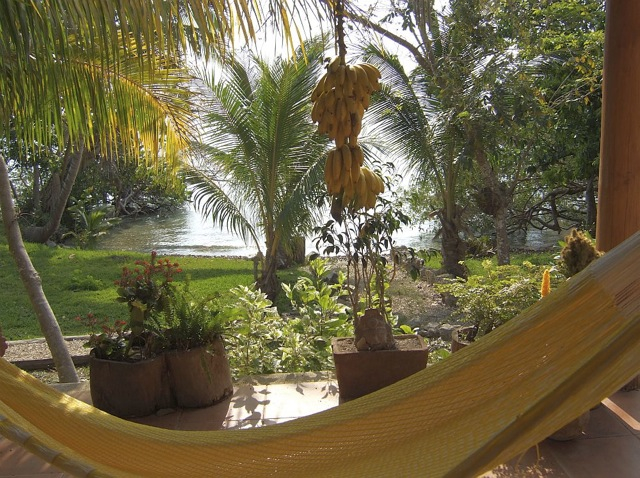by John Lamkin
Sitting here watching the sunrise on the lagoon—Laguna Bacalar--I recall the time we arrived by canoe at the little cove here and decided that this would be an excellent spot to build a house. It was covered with scrub growth, weeds, some trees, coconut palms and the jungle was trying to reclaim it. Now, looking from the terraza of the house, it looks manicured, with lawns, flowers, intentional landscaping and the jungle held at bay. We had the house built by a Mexican architect friend with the unlikely name, Shiva. It's small, sets back about twenty meters from the water and has views of the Laguna from every room except the large bathroom which has its own indoor garden. It took awhile to manifest after the canoe ride, some looking at other places in Mexico, but it happened. It helped that it was on part of the land we already owned.

It seems there comes a time in a man's life when he has the strong urge to build, maybe something for 'posterity'--to make his mark on the land. I found locations for two other homes in somewhat the same manner as the Laguna house. The first was what they called a 'camp' in Nova Scotia. Back in California, where I came from, it would be called a cabin. I bought the 149 acres sight unseen.

